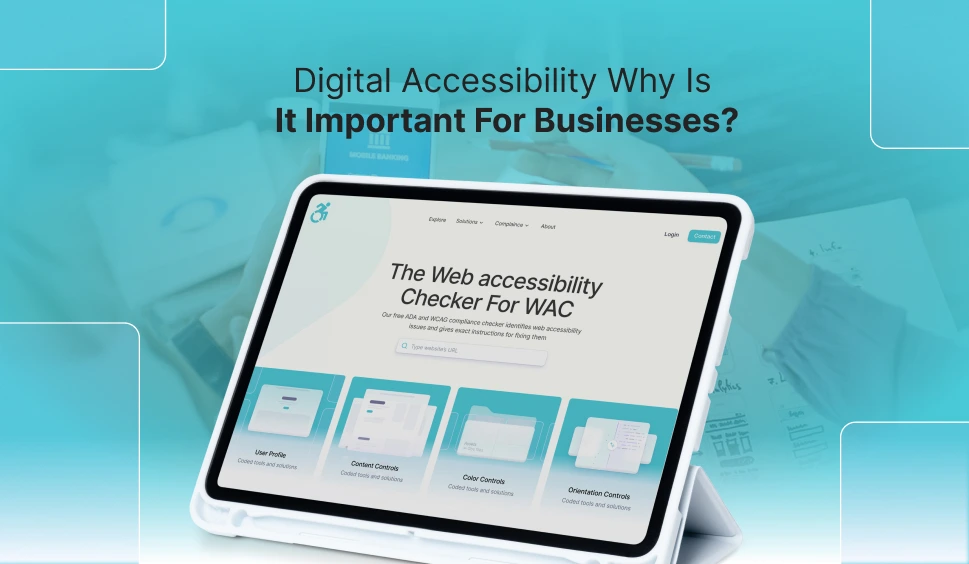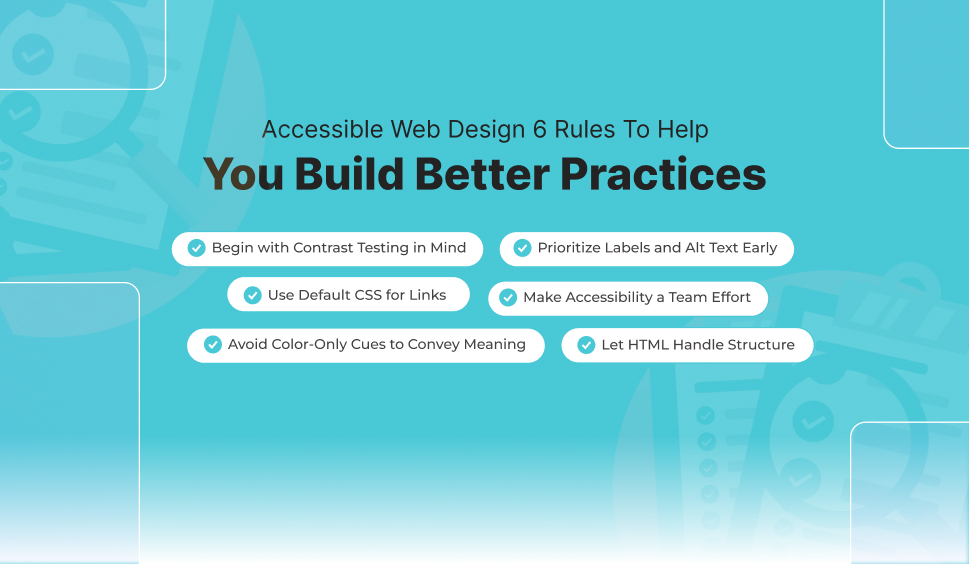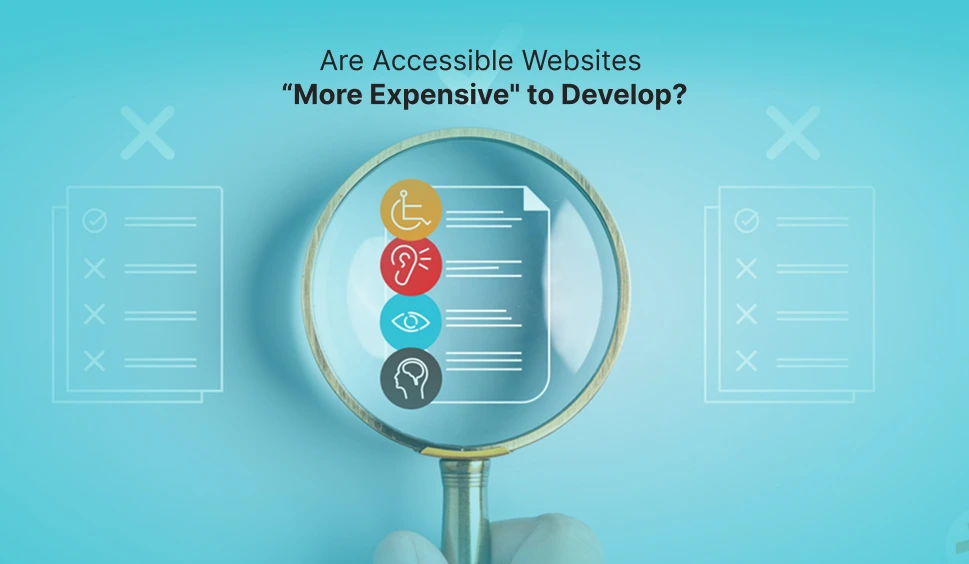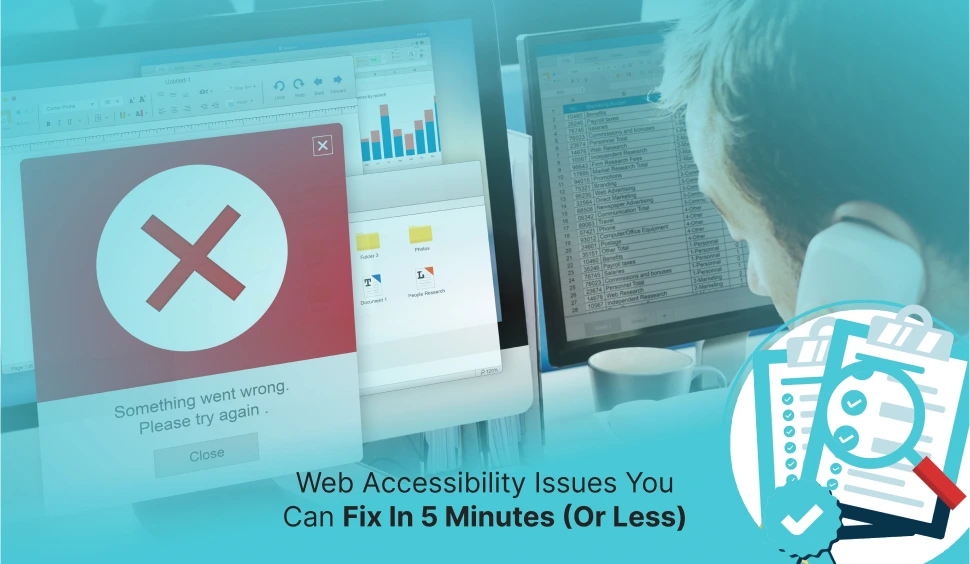
Digital Accessibility: Why Is It Important For Business?
If you are seeking to make access to your digital tools and services easier and your communication more comprehensive, then participate in digital accessibility! As per the World Health Organization (WHO), more than a billion people globally have a disability, which is around 15% of the world’s population. In case you are not aware of what digital accessibility is and why it is so important for business, then keep reading.
What is Digital Accessibility?
Digital accessibility involves making digital content, services, and tools available, usable, and understandable for people dealing with disabilities.
This involves impairments in all the below-given areas:
-
Visual
Eye disorders, including myopia and visual impairment and/or diseases like glaucoma and cataracts.
-
Auditory
Ear disorders lead to mild to severe hearing concerns like tinnitus or deafness.
-
Motor
Disorders causing the body parts movement difficult, such as lumbago, myopathy, and paraplegia.
-
Cognitive
Disorders causing issues with memory, language, and or reasoning like dyslexia.
The Four Rules of Accessibility
As per the WCAG 2.2 international guidelines, web content must respect four basic principles to let disabled people access it. This content must be:
-
Usable
They must be allowed to use the interface and find content when browsing easily.
-
Understandable
They could understand the meaning of the shared details.
-
Reliable
They must be able to interpret information using any browser or operating system, including assistive technologies.
-
Accessible
Users must be able to understand the presented information, irrespective of the device used to engage.
These rules influence the content crafted in-house, which involves your website, applications built by your team and external tools and services used by you and your team, normally your collaborative SaaS tools.
Why are Accessibility Tools Required?
Investing in digital accessibility is important for any organization as it helps companies and organizations through:
-
Brand Image
An accessible business is possible to be perceived more favourably by customers. Just as bad accessibility can ruin a brand’s reputation, good accessibility practices can help build a strong and reliable brand image. Companies that make an effort to be more accessible and serve all of their customers more effectively gain more market recognition.
-
Improved SEO
Search engines such as Google dedicatedly offer the best search results to their users. Search engine crawlers then consider your website’s user experience and rank it accordingly. Accessibility is significant to delivering a great user experience, and companies having a higher degree of accessibility are more likely to be ranked higher due to the boost in SEO efforts.
-
Wider Audience Reach
As per the internet sources, 1 in every 6 people globally experience some kind of serious disability. Therefore, the more digitally accessible a business is, the wider the audience it can reach. Businesses reaching larger customer bases more possibly enjoy higher sales figures and higher profitability.
-
Legal Compliance
Numerous countries have laws controlling digital and physical accessibility, and businesses not following those rules could face serious repercussions.
-
Improved User Experience
Business accessibility makes it possible for disabled people to use a company’s products and services with a better overall user experience for all. It provides clear, easy, and improved navigation practices that provide benefits to users having all kinds of disabilities. Companies having no apps or websites accessible are at risk of losing a huge number of prospective users.
How to Make Your Business Accessible?
Including accessibility in your digital strategy is the first step towards making your business accessible, which is essential for development and profitability. You can make your website more inclusive right from the start by taking accessibility into account at every stage of the planning process, such as when choosing readable fonts, creating interactive components, adding alt text to photos, and choosing accessible colors and contrasts. It’s also important to regularly assess current web pages to ensure they adhere to current accessibility guidelines, using AI techniques that can identify and assist in resolving any problems.
Accessibility should provide relevant alt language for images and careful use of color and design to meet the needs of users with visual impairments. Similarly, providing transcripts for audio and video content ensures that everyone can access and understand the information being delivered, even those who face difficulty in hearing. Keeping these components as a top priority provides a complete business environment that benefits all users.
Why Choose WAC?
WAC (Web Accessibility Checker) is the best tool to use if you want to make your online presence complete and compliant. WAC provides an effective combination of real-time monitoring, accessibility auditing, and an integrated widget that enhances usability for all users. Whether your goal is WCAG or ADA compliance, WAC’s innovative tools provide precise, detailed instructions for finding and resolving problems, ensuring a seamless, accessible experience for all site visitors. Contact WAC to reconsider how your company provides equity and access online.
 Let's Discuss Your Tech Solutions
Let's Discuss Your Tech Solutions 




